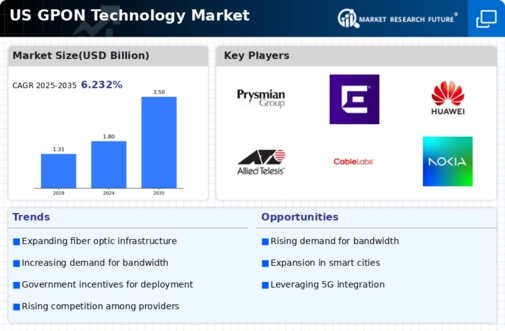The US GPON Technology Market is characterized by its rapid advancement and competitive landscape, driven by rising demands for high-speed internet and increased adoption of fiber optic technology. The market includes various players who provide solutions for broadband access, network modernization, and fiber-optic infrastructure. Companies operating within this space are focused on enhancing their offerings through innovation, strategic partnerships, and an understanding of customer requirements. Key trends and technological advancements play a significant role in shaping the competitive dynamics, allowing various manufacturers and service providers to carve out unique positions within the market.
Prysmian Group stands out in the US GPON Technology Market due to its extensive portfolio of fiber optic cables and solutions that support high-speed data transmission. With a steadfast commitment to quality and innovation, Prysmian Group has established itself as a key player, benefiting from a strong brand reputation and a comprehensive distribution network across the United States. Its strengths lie in its ability to deliver customized solutions that cater to diverse market needs, including telecommunications and broadband access.
This market presence is further bolstered by ongoing investments in research and development, which enable Prysmian Group to stay ahead of technological advancements and maintain competitive advantages in product offerings.
On the other hand, Extreme Networks focuses on delivering robust networking solutions tailored for the US GPON Technology Market. The company is renowned for its high-performance networking hardware and software solutions that facilitate efficient data management and connectivity. Extreme Networks has fostered a strong presence in the US market through strategic mergers and acquisitions, allowing it to enhance its product portfolio and broaden its service offerings. The company's strengths include a commitment to customer service, continuous product innovation, and integration capabilities that streamline operations for end-users.
Its key products and services encompass cloud-managed networking solutions, analytics, and cybersecurity, designed to empower organizations to optimize their network infrastructures and provide reliable high-speed internet access.




















